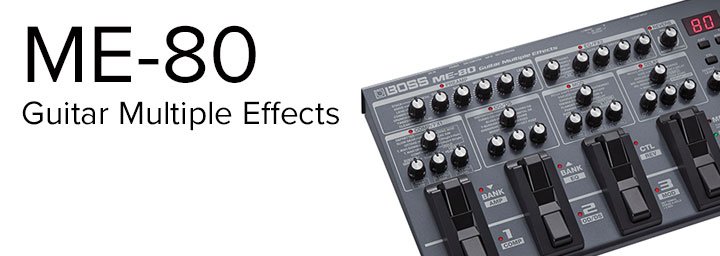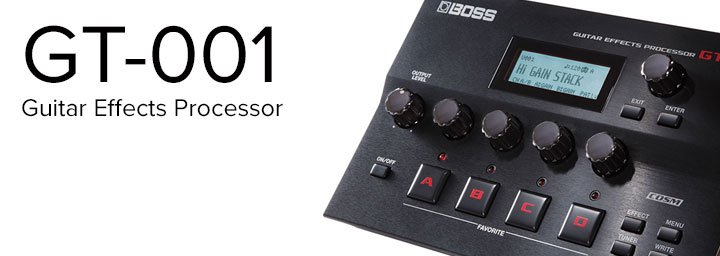It’s hard to believe that this classic rock song is now 40 years old! Often cited as the turning point Brian May has gone on the record to say “there’s a lot to listen to, but it never gets cluttered. There’s always space for all the little ideas to come through. And of course, I like the solo, with that three-part section, where each part has its own voice. What can I say? It’s vintage Queen.”
Personally, I’ve always loved Brian May’s playing and tone, especially on those early recordings. There’s a really specific tone that comes from a combination of his ‘Red Special’ guitar (that he legendarily made with his Dad from the fireplace mantel) and the mid range drive that comes from a Vox AC-30 cranked (and quite possibly modified to get that amount of gain).
The ‘trick’ to getting this classic tone is a lot to do with the way the amp was originally recorded and the sound of the room mic.
Since I used the BOSS ME-80 on my Classic Patches Medley video, I’m going to go through how I would create this tone on it, but essentially the process would be same on any of the BOSS multi effects units.
Contributed by Josh Munday – Tone Designer
In an earlier blog article, I spoke about the best way to approach a tone is to consider the 4 Elements of Guitar Tone and using those principles, we have:
1. The Guitar
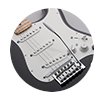 Brian May’s ‘Red Special’ has a very distinctive tone. Although having what appears to be 3 single coils in that guitar, there are several switches on the guitar that allowed him to select more complex wiring combinations than on a normal 5-way strat switch combination.
Brian May’s ‘Red Special’ has a very distinctive tone. Although having what appears to be 3 single coils in that guitar, there are several switches on the guitar that allowed him to select more complex wiring combinations than on a normal 5-way strat switch combination.
For those that are reading this article before watching the medley video, I use a Fender G-5 for the entire piece. You will need to make slight adjustments in your final settings depending on which guitar you are using.
2. The Pickup Selection
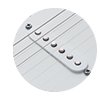 This is definitely a bridge type pickup tone but because of the wiring on that guitar the tone is more akin to a humbucker than a bright single coil. So, no matter what your guitar, select the bridge pickup.
This is definitely a bridge type pickup tone but because of the wiring on that guitar the tone is more akin to a humbucker than a bright single coil. So, no matter what your guitar, select the bridge pickup.
If you don’t happen to own a guitar with a humbucker in the bridge, use the closest approximation. For example, if you own a Stratocaster, select the bridge pickup and we will deal with the tonal differences later (in the EQ, Compressor and FX sections)
3. The Amp
 Always start with everything off – I can’t stress this enough!
Always start with everything off – I can’t stress this enough!
Find the OFF button for everything in the signal chain so all you can hear is your dry guitar sound coming through.
Remember any multi-FX / amp simulator like the BOSS ME-80 is simulating a room full of gear, so think about it like that, you wouldn’t walk into a room full of amps and FX and start by turning everything ON would you? You would plug into an amp, get a good basic tone, then turn on any effects one at a time and build up your sound…. likewise with any multi-FX.
When selecting an amp there are some basic rules of thumb that will help:
► Set the EQ “flat” (i.e. all settings at the half way point or 12 o’clock) this gives you a neutral starting point so that the EQ isn’t colouring the tone.
► Set the gain stage at about a quarter to half a turn (or between 9 and 12 o’clock)
This gives you a good idea of what the plain amp tone sounds like with a mild amount of gain so you can also hear the gain stage character. In this case Brian uses a Vox AC-30 so we select the ‘Combo’ Amp setting.
You can hear that there is quite a bit of mid range and bottom end in the Killer Queen solo and the drive is considerably more than what comes from a standard Vox AC-30 amp – so I’d start by boosting the Bass and Mid range, and put the gain to full.
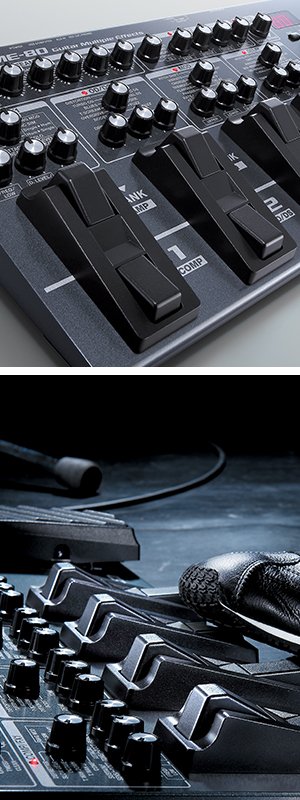 4. The Effects
4. The Effects
In this section we’ll cover how to modify the pickup tone to allow for whatever guitar you are working with and show you how to simulate the room mic effect from that recording.
By now, you’ll have a pretty close approximation of the Brian May Killer Queen tone but to really get it close you need to do some more tweaking.
► I’ve used a strat so I have a single coil in the bridge and, as I mentioned earlier, this is more of a humbucker type tone so I’ve use the ‘Single-Hum’ converter feature in the COMP/FX1 section of the ME-80 to thicken it up.
► To get a better match, I wanted even more bottom end and mid range so I used the extra EQ we have available on the ME-80 EQ/FX2 section to boost that even more.
► The final (and one of the most crucial) parts of this tone is the sound of the room mic on the Amp. Often there’ll be a microphone ‘on’ the amp (meaning up close) and then another mic. located in the room somewhere.
For the Killer Queen solos, the room mic. is a large part of the sound. We can simulate this room microphone with a single short delay. For these situations a good rule of thumb is that each millisecond of delay represents 1 foot of distance between the amp and the room mic.
For example, turn on the delay, set the Repeats to ‘0’ (which actually means 1 single repeat), turn the Effect Level up to about 80% and then slowly adjust the milliseconds from 1 up to 9. If you play a note while you do this you’ll hear the tonal change.
► There’s also a small amount of reverb on this sound too so I’ve selected a ROOM reverb and turned it up to about 20.
There you have it – the guitar tone from Brian May’s “Killer Queen” solo.
Download the ‘Killer Queen’ patch for BOSS GT-100 HERE
Download the ‘Killer Queen’ patch for ME-80 HERE
Download the ‘Killer Queen’ patch for GT-001 HERE
Thanks to Mark Smith for his assistance in writing this article.
Related Articles
Who is Joshua Munday?
4 Elements of Guitar Tone
BOSS ME-80 Classic Patches Medley
Brian May’s ‘Killer Queen’ Guitar Tone Dissected
Another Brick In The Wall – Part II’ (Pink Floyd) Guitar Tone Dissected
‘Panama’ (Van Halen) Guitar Tone Dissected
‘Hotel California’ (The Eagles) Guitar Tone Dissected
Bad to the Bone’ (George Thorogood) Guitar Tone Dissected
‘Crazy Train’ (Ozzy Osbourne) Guitar Tone Dissected
‘Killing In The Name’ (Rage Against The Machine) Guitar Tone Dissected
Related Products
Image Credit: oleksii ovchynnikov / 123RF

